Do-Wop: Fast, complex, improvisational
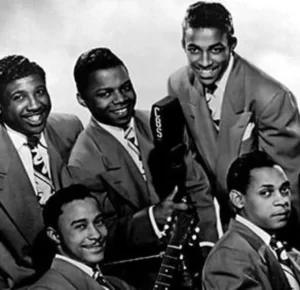
The Orioles
The Orioles were one of the pioneering doo-wop groups of the 1940s and 1950s, and their smooth harmonies and catchy melodies had a lasting impact on the development of rock and roll. Their hits like “Crying in the Chapel” and “It’s Too Soon to Know” showcased their ability to blend R&B with pop, laying the foundation for the vocal harmonies that became central to rock and roll. The group’s polished sound and emotional ballads helped shape the way early rock acts approached storytelling through music. Their success with crossover hits also helped expand rock’s appeal to mainstream audiences, drawing from both Black and white listeners. The Orioles’ contribution to vocal group harmony and their emphasis on romantic themes directly influenced rock and roll’s rise in the mid-1950s, shaping the sound of groups that followed.
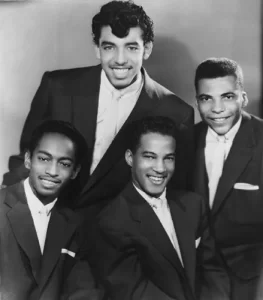
The Charms
The Charms influenced rock and roll by helping to bridge doo-wop and early rock with their smooth harmonies and rhythm-and-blues style. Their 1954 hit “Hearts of Stone” became a crossover success, showing how R&B vocal groups could appeal to both Black and white audiences. The Charms’ energetic delivery and emotional vocals laid the groundwork for the vocal-driven sound that would define early rock and roll. Their success helped popularize the doo-wop genre, which strongly influenced early rock acts like The Platters and even The Beatles. By blending gospel, R&B, and pop, The Charms contributed to the melting pot of styles that became rock and roll. Their music captured the spirit of youthful emotion and rhythm that the genre would carry forward.
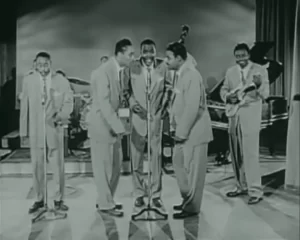
The Clovers
The Clovers influenced rock and roll by bringing rhythm and blues to a wider audience with their smooth harmonies and catchy, upbeat songs. Hits like “Love Potion No. 9” and “Devil or Angel” showcased their blend of R&B, doo-wop, and pop, which became a foundational sound for early rock and roll. Their playful lyrics and vocal style inspired many rock artists to combine storytelling with rhythm-driven music. The Clovers also helped pave the way for integrated radio play and crossover success, showing that R&B could appeal to mainstream audiences. Their influence can be heard in the work of early rock pioneers like Elvis Presley and The Coasters. By shaping the sound and feel of 1950s music, The Clovers played a key role in rock and roll’s development.
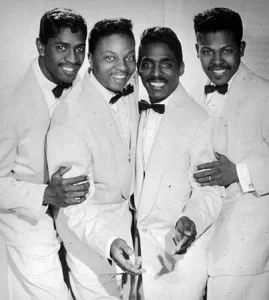
The Penguins
The Penguins influenced rock and roll through their hit song “Earth Angel,” one of the first doo-wop ballads to cross over from the R&B charts to mainstream pop success. Their heartfelt harmonies and romantic themes became a model for early rock ballads, inspiring countless groups in the 1950s and 1960s. “Earth Angel” in particular had a huge impact on teen culture and showed how deeply emotional music could resonate with young audiences. The Penguins helped solidify doo-wop as a major influence on rock and roll, blending gospel-inspired vocals with rhythm and blues foundations. Their success also demonstrated the commercial power of Black vocal groups in shaping the sound of popular music. Many future rock and roll acts, including The Beatles, drew from the style and emotional expression The Penguins helped pioneer.
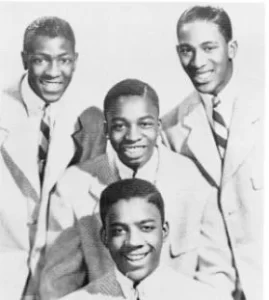
The Crows
The Crows influenced rock and roll by helping to popularize the doo-wop sound with their 1954 hit “Gee,” one of the first R&B songs to become a major crossover success on the pop charts. Their mix of upbeat rhythm, vocal harmony, and youthful energy captured the spirit of early rock and roll. “Gee” is often cited as a key record in the transition from rhythm and blues to rock, paving the way for other Black vocal groups to enter the mainstream. The Crows’ success showed that music appealing to teens—especially songs about love and fun—had mass market potential. Their sound and style influenced later doo-wop and early rock groups, setting the stage for artists like The Coasters and Frankie Lymon. By blending R&B roots with pop sensibilities, The Crows helped shape the early identity of rock and roll

The Five Satins
The Five Satins had a significant influence on rock and roll through their iconic doo-wop hit “In The Still of the Nite,” which became a cornerstone of 1950s rock and roll. Their blend of smooth vocal harmonies and heartfelt lyrics helped define the romantic, emotive side of the genre, influencing countless rock bands in the process. The group’s tight vocal arrangements and use of a lead singer paired with harmonizing backup vocals became a model for both doo-wop and early rock bands. Their music, often focused on themes of love and longing, resonated deeply with the teenage audience, helping to shape the youth-driven culture of rock. The Five Satins’ success also helped cement the crossover of Black R&B and doo-wop acts into the mainstream, contributing to the racial integration of the music industry. Their lasting influence can be heard in the vocal harmonies and lyrical themes of rock acts that followed, like The Beatles and The Beach Boys.
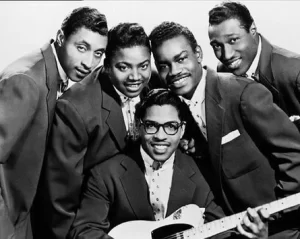
The Moonglows
The Moonglows played a key role in shaping rock and roll through their smooth doo-wop harmonies and rhythmic, emotionally charged songs. Their 1955 hit “Sincerely” became a classic and helped establish the doo-wop style as a major influence on early rock and roll. The group’s blend of R&B and vocal harmony inspired many of the rock artists who followed, including groups like The Platters and The Drifters. Their success also showcased the commercial potential of Black vocal groups in mainstream music, helping bridge the gap between rhythm and blues and rock. The Moonglows’ emotional delivery and storytelling through song influenced the way rock and roll artists would approach both love ballads and more energetic tunes. By pushing the boundaries of vocal harmony and expression, they helped define a central aspect of rock’s emotional depth.
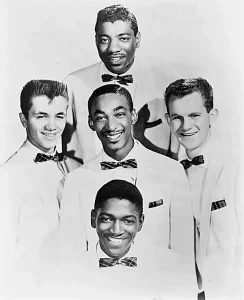
The Del-Vikings
The Del-Vikings influenced rock and roll by blending doo-wop, R&B, and early rock elements, helping to bridge the gap between these genres in the 1950s. Their 1957 hit “Come Go With Me” became a crossover success, showing how doo-wop groups could appeal to a broader, mainstream audience. The Del-Vikings’ smooth harmonies, catchy melodies, and upbeat rhythms helped define the sound of early rock and roll, influencing later groups like The Beach Boys and The Beatles. Their racial integration as a Black and white vocal group also reflected the changing cultural landscape of the 1950s, contributing to rock and roll’s role in breaking down racial barriers in music. The group’s success demonstrated that rock could be both emotionally engaging and commercially viable, laying the foundation for future rock bands. By fusing R&B and doo-wop, The Del-Vikings helped set the stage for the evolution of rock and roll.
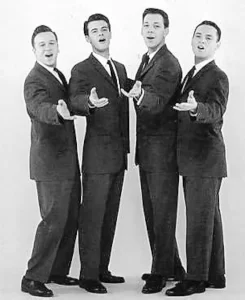
The Diamonds
The Diamonds influenced rock and roll by blending doo-wop with pop sensibilities, helping to bring the genre into mainstream popularity. Their hit songs like “Little Darlin’” became quintessential rock and roll anthems, showcasing catchy melodies and harmonies that resonated with a wide audience. Their smooth vocal arrangements and rhythmic delivery inspired future rock acts, emphasizing the importance of vocal harmony in rock music. The Diamonds also helped popularize the crossover of doo-wop and R&B influences into the pop charts, contributing to rock’s evolving sound. Their success on the charts demonstrated that rock and roll could be both commercially successful and emotionally engaging, helping to solidify the genre’s place in the 1950s music scene. By merging upbeat pop tunes with the emotional depth of doo-wop, The Diamonds helped shape the early identity of rock and roll.
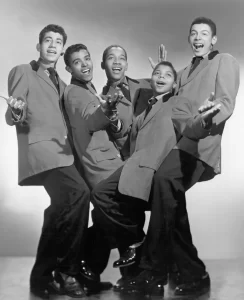
Frankie Lymon & The Teenangers
Frankie Lymon and the Teenagers had a significant impact on rock and roll by introducing a youthful energy and emotional depth to the genre. Their 1956 hit “Why Do Fools Fall in Love” became one of the first rock and roll songs to feature a young, charismatic lead singer paired with tight harmonies, which became a key feature of the genre. Frankie Lymon’s distinctive voice and the group’s catchy melodies influenced future rock artists, particularly in how to blend pop, doo-wop, and rhythm and blues. Their success also demonstrated that rock and roll could appeal to teenage audiences, shaping the genre’s connection to youth culture. The Teenagers helped set the stage for later groups like The Jackson 5, with Lymon’s influence extending beyond rock to soul and pop music. By combining heartfelt lyrics with energetic performances, they cemented their place in rock history.